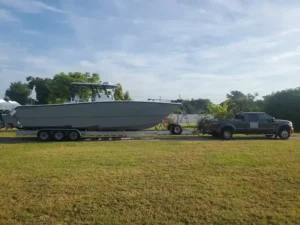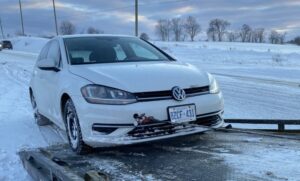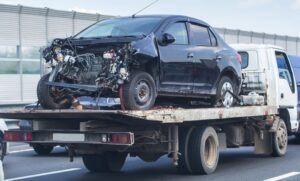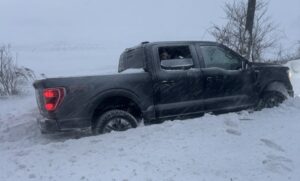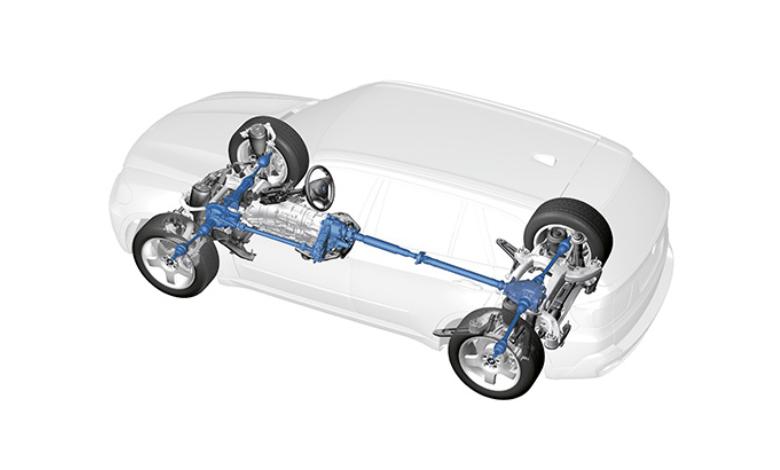The reassuring feeling of all wheel drive engaging when the Ontario roads turn slick with snow or rain is invaluable. It’s a core safety feature that provides superior traction and control. That’s why, when the “AWD Malfunction,” “Check AWD System,” or a similar warning light illuminates on your dash, it can be deeply concerning. If your all wheel drive not working light comes on, it signals a serious issue within one of the most complex mechanical and electronic systems in your vehicle.
For drivers in Aurora and the Greater Toronto Area (GTA), understanding the common causes of all wheel drive not working is the first step toward getting a professional, damage-free repair. Given the intricate nature of these systems, improper towing can turn a manageable repair into a catastrophic component replacement. As a trusted local service, Pars Towing is dedicated to not only identifying the potential mechanical failures but also providing the specialized flatbed towing necessary to protect your investment.
- Learn More >>>>>Hidden Dangers of Towing
The Complex Anatomy of All Wheel Drive
Before diving into the failures, it’s important to appreciate what makes an AWD system different from a standard front-wheel drive (FWD) or rear-wheel drive (RWD) vehicle. In an AWD car, power is continuously or automatically distributed to all four wheels. This requires a dedicated set of components that are not present in two-wheel drive vehicles:
- The Transfer Case: This unit takes power from the transmission and splits it, sending power via a driveshaft to the front axle and another driveshaft to the rear axle.
- Front and Rear Differentials: These devices distribute power to the wheels on the same axle, allowing them to turn at different speeds when cornering.
- Driveshafts and CV Axles: These mechanical shafts transmit torque between the transfer case, differentials, and wheels.
- Electronic Control Unit (ECU) and Sensors: Modern AWD systems are heavily reliant on sensors (especially wheel speed sensors) and a dedicated computer module to monitor traction and determine how much torque to send to each wheel.
The failure of any single component in this chain can result in a complete shutdown of the system, leading to the dashboard warning and the frustrating realization that your all wheel drive not working.

- Learn More >>>>>How to Call a Tow Truck: A Step-by-Step Guide
1. Mechanical Component Failure: The Hard-Part Problems
The most serious and costly reasons for an all wheel drive not working involve the physical failure of rotating components. These issues are often accompanied by distinct noises and should prompt immediate attention.
The Transfer Case Breakdown
The transfer case is arguably the heart of the AWD system. It is a gearbox that precisely manages the torque distribution.
- Fluid Neglect: The most common cause of transfer case failure is low or contaminated fluid. The specialized oil within the case lubricates the chains, gears, and bearings. If this fluid degrades or leaks out (due to a failed seal), the metal parts overheat, leading to rapid wear. Symptoms include a distinct grinding or clunking noise originating from beneath the vehicle, often felt during acceleration or turning.
- Chain or Gear Damage: The internal drive chain can stretch over time, or the gears can chip or seize due to excessive stress or lack of lubrication. When this occurs, the transfer case is unable to accurately split power, causing the computer to disengage the AWD system entirely.
Differential Issues
Both the front and rear differentials are prone to similar failures as the transfer case, primarily due to fluid-related issues.
- Worn Bearings: Internal bearings that support the rotation of the differential gears can wear out, causing a whining or howling noise that changes pitch with vehicle speed. If a bearing fails completely, the system can bind or seize.
- Worn Clutch Packs (in some systems): Many modern AWD systems use clutch packs within the rear differential (such as Haldex or electronically controlled types) to vary the torque split. These clutches can wear out or the hydraulic pump that operates them can fail, resulting in the all wheel drive not working.
Driveshaft and Axle Damage
If you’ve recently driven over a severe pothole on an Aurora road or hit debris, you may have physically damaged one of the driveshafts or CV axles.
- Bent Driveshaft: A bent driveshaft will cause severe, rhythmic vibration at higher speeds, which the vehicle’s sensors will interpret as a critical fault, often forcing the AWD system to shut down for protection.
- Failed U-Joints or CV Joints: These joints allow the driveshafts and axles to articulate. If they fail, they will produce clicking or clunking noises during turns or acceleration, leading to system failure.
- Learn More >>>>>Can Towing Ruin the Transmission?
2. Electrical and Sensor Malfunctions: The Brain of the System
In modern vehicles, most cases of the all wheel drive not working are initially triggered by an electronic signal failure, rather than a hard mechanical breakdown. The AWD computer is designed to shut down the system the instant it receives illogical data, often as a preventative safety measure.
Faulty Wheel Speed Sensors (WSS)
The WSS are the eyes and ears of the AWD, ABS, and Traction Control systems. They are responsible for reporting the rotational speed of each wheel to the computer.
- Incorrect Readings: If a WSS fails, is dirty, or its wiring is damaged, the computer receives an incorrect reading. It might interpret the car as having a flat tire or being in a continuous state of slippage, which confuses the torque distribution logic. The system’s immediate response is to turn off.
- Common Symptoms: WSS failures often trigger multiple warning lights simultaneously, including the ABS light, Traction Control light, and the AWD malfunction light.
Transfer Case Actuator or Solenoid Failure
Many part-time AWD systems rely on an electric actuator (a small motor) or solenoid to physically shift the transfer case into or out of AWD mode.
- Failure to Engage: If the actuator motor burns out or a solenoid fails to open/close a fluid passage, the system simply cannot physically engage the AWD components, resulting in a system failure warning.
Control Module Malfunction
The main AWD Control Module (ECU) itself can experience a software glitch, internal component failure, or a communication error. This is a complex electrical diagnosis that typically requires specialized dealer-level scanning tools to confirm. The module may simply need a software reflash or, in the worst case, a complete and costly replacement.
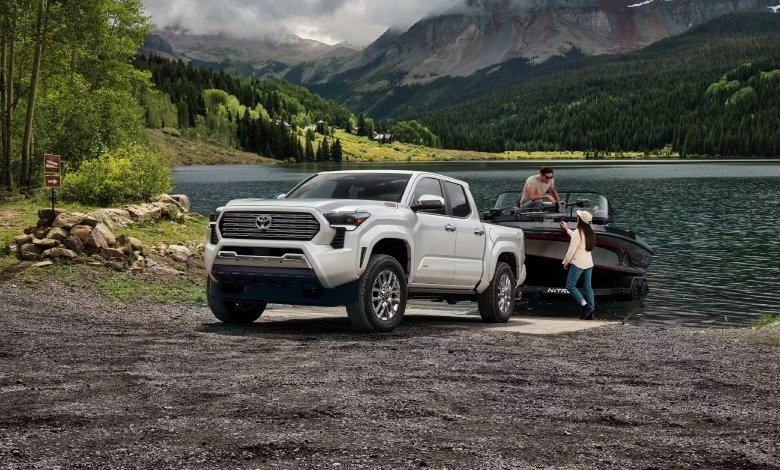
- Learn More >>>>>Aurora Towing: Our Average Wait Time Promise
3. Improper Tire Maintenance: A Self-Inflicted Wound
One of the most surprising and common causes of all wheel drive not working is poor tire maintenance—a situation entirely preventable by the driver.
Mismatched Tires
An AWD system is extremely sensitive to wheel speed differences. If you replace only one tire or use tires with significantly different tread depths (i.e., mixing an old, worn tire with three new ones), the difference in circumference between the wheels will cause the all wheel drive system to constantly engage and disengage.
- System Overheating: The AWD computer interprets the tire size difference as perpetual slippage and attempts to correct it by working the transfer case or differential clutches continuously. This causes immense heat, leading to premature wear, fluid breakdown, and eventual shutdown with an “AWD Overheating” warning.
- Manufacturer Mandate: Most AWD manufacturers strictly recommend replacing all four tires simultaneously to maintain a negligible difference in tread wear and circumference.
- Learn More >>>>>Towing Service Near Me: Your Essential Guide
When the All Wheel Drive Not Working Requires Towing
When you see the AWD warning light, especially if accompanied by grinding, clunking, or binding sensations during turns, you must stop driving immediately. Continuing to drive with a compromised AWD system can rapidly turn a minor sensor issue or a seal leak into a catastrophic mechanical failure requiring thousands of dollars in repairs.
This is where calling a professional towing service like Pars Towing becomes absolutely essential, particularly in the Aurora area.
The Critical Need for Flatbed Towing
All wheel drive and four-wheel drive vehicles must be transported with all four wheels completely off the ground.
- The Danger of Two-Wheel Towing: If a standard wheel-lift (or “hook”) tow truck lifts only the front wheels and drags the rear wheels, the rear drivetrain components (differential, driveshaft, and transfer case) are forced to spin without the engine running. Since the vehicle’s internal components are linked and the system is designed to distribute torque to the rear, this action generates extreme mechanical stress, friction, and heat. Even short-distance towing with two wheels down can irreparably destroy the transfer case and transmission, voiding your warranty.
- Pars Towing’s Solution: As a professional towing provider serving the Aurora area, Pars Towing understands this critical requirement. For all light duty, medium duty, and motorcycle towing services involving an AWD vehicle, we use our flatbed towing trucks. Flatbed towing guarantees that your entire vehicle is safely secured on a flat platform, eliminating all mechanical stress on the drivetrain and ensuring your car arrives at the repair facility in the same condition it left the roadside.
Whether your vehicle needs light duty towing from a breakdown, flatbed towing for a luxury AWD sedan, or accident assistance service for a crossover, choosing the flatbed is the only safe option when your all wheel drive not working.
In the event of a failure, remember to call Pars Towing. Our expertise in long distance towing, heavy duty, and medium duty recovery ensures we have the equipment and knowledge to handle your AWD system with the care it demands, safely transporting it to the nearest approved repair facility across Ontario.

